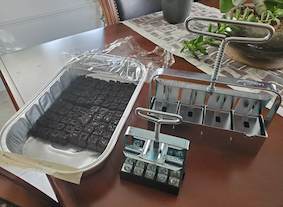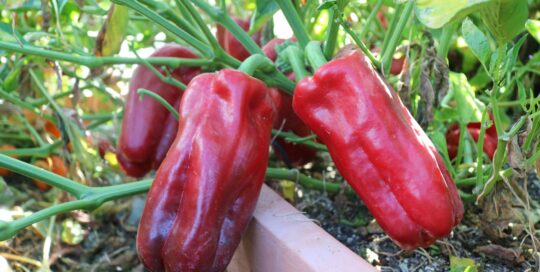Pressed Soil Blocks
Views: 278

Stick to your resolution to rely less on plastic in your gardening activities and use pressed soil blocks as your “pots” instead. Save yourself from having to clean and find storage space for a bunch of plastic trays and tubs that you won’t use until next indoor seed sowing season. With soil blocks, you plant the block and all directly into either another block or into the ground. The only thing you have to store is the block-making machine.
“Wait, what? I have to make these soil blocks myself?,” you’re asking me. Yes, and it’s a relatively simple process and totally worth it. Let’s start from the beginning, though, and talk about what a soil block is and what the benefits are.
What Is a Soil Block?
It’s exactly that—a solid block of soil. I have seen them as small as one-inch cubes and as big a 4-in. x 2-in. Some soil block makers have a center pin that pre-forms a hole for planting seeds.
Soil blocks can be made using your preferred potting or seed-sowing soil. Make sure the media you use is quite moist. Moisture keeps the block in block form until the seedling grows enough to hold the soil together with its web of roots. I have seen soil block makers or forms that create single blocks, sets of two or four or eight that are basically punched out of the device. I’ve also seen forms that create rectangles of up to 35 blocks that you’d press into a pile of soil. Whichever device you use, the main thing is that all of these blocks are separate individual blocks.
What Are the Advantages?
Soil blocks result in something called “air pruning,” which causes roots to be primed for growth once they come in contact with soil again. Pull a plant from a pot and chances are you’ll see roots that have grown from the soil, out to the wall of the container and then started wrapping around themselves within the pot, which can become a problem plant later on. If the pot wall wasn’t there, the roots would reach the soil-air edge and stop growing. It’s root biology. Those edge roots are like horses in a starting gate with the air space holding them back. Once that block is planted in either another bigger block or in the ground, those roots are ready and primed to grow out and into their new environment. Therefore, they result in plants with roots that are eager to establish themselves once planted.
Another advantage I already alluded to is the reduced amount of plastic you’re using in your gardening practices. Did you know that only about 5% of plastics you put in your recycling bin are actually recycled? Even if you do use a plastic tray to hold your soil blocks, you’ll use less plastic by skipping the pots.
Less stuff to carry over from year to year—that is a big advantage for me. As someone who has limited space for storage, the fewer pots—plastic or otherwise—is a big advantage of using soil blocking.
There are a number of different blockers or forms available from your favorite online shopping resources. Or even check out the offerings at your local garden center. For more details about this technique please read THIS article which goes in depth on the topic.
Meet Ellen Wells
When you’re raised on a farm, you can’t help but know a thing or two about gardening. Ellen Wells is our expert on edible gardening.…
Ellen's Recent Posts

Pepper Red Impact an All-America Selections Winner






